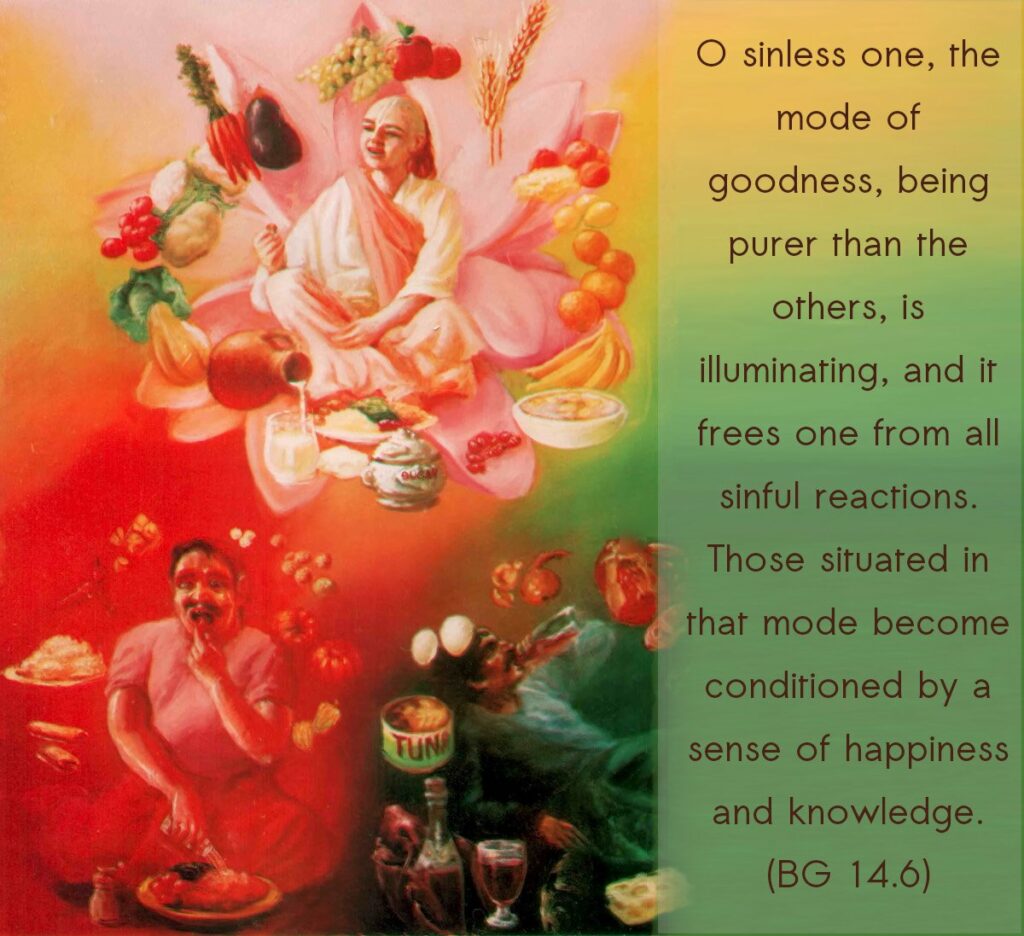तत्र सत्त्वं निर्मलत्वात्प्रकाशकमनामयम् |
सुखसङ्गेन बध्नाति ज्ञानसङ्गेन चानघ || 6||
tatra sattvaṁ nirmalatvāt prakāśhakam anāmayam
sukha-saṅgena badhnāti jñāna-saṅgena chānagha
tatra—amongst these; sattvam—mode of goodness; nirmalatvāt—being purest; prakāśhakam—illuminating; anāmayam—healthy and full of well-being; sukha—happiness; saṅgena—attachment; badhnāti—binds; jñāna—knowledge; saṅgena—attachment; cha—also; anagha—Arjun, the sinless one
Translation:
Of these, sattva, being stainless, is luminous and healthful. It binds, Ο sinless Arjuna, by creating attachment to happiness and attachment to knowledge.
Commentary:
As the three Gunas are produced from prakriti, Sattva guna also is a part of ‘avidya’. But it is the pure aspect of Prakriti. By its purity, it is superior of higher than the other two gunas. So it is no doubt a desirable quality in spiritual progress. But in the perfect Atmic state, even this Sattva guna pure and light-giving as it is, is an obstacle, a covering veil to Atma. If a pure light is covered by glasses of three colours, different effects are produced. If the glass is dark, the light is dim. If the glass is red, the light casts a red shadow. If the glass is white the light is clear. But the white glass also is a covering veil to the pure light within. The original purity of the light itself is modified by the glass, however clean it might be. So also the sattva guna binds the jiva by attachment to happiness and knowledge. When a man says ‘I am happy’, he is attributing to himself the experience of the senses and the mind (Kshetra) to himself. The false identification is due to ‘avidya’. This happiness is kshetradharma, and it is superimposed on the Kshetrajna (Atma) by the ignorance of the Jiva. And again, when a person says ‘I have knowledge of this or that’, he is committing the same error in imposing on Atma, the quality of the intellect which is also Kshetradharma. Thus Sattva guna binds man to happiness and knowledge. Both are modifications of the mind and intellect. They do not belong to Atma. So the Lord exhorts Arjuna to transcend the Sattva guna also and reach the Atmic state.
Anagha: Arjuna is sinless, and so, by his purity and stainlessness, he is qualified to receive the highest Brahma Vidya.
Question: What is the nature of Sattva guna?
Answer: It is pure, light-giving, and untroubled.
Question: How does it bind man?
Answer: It binds man by the happiness of the senses and the desire for knowledge (vritti).
Question: What should the aspirant do?
Answer: He should go beyond ‘Sattva guna’ also and reach ‘Atma’.
Bhagavad Gita: Chapter 14 🔻 (27 Verses)
